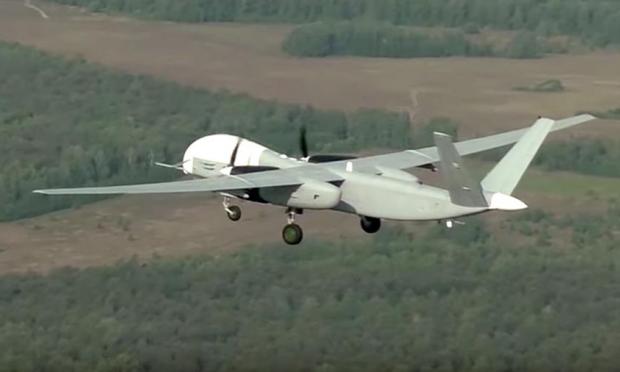Drones have undoubtedly changed the way in which armed conflicts are now conducted.
The US Foreign Policy Institute, one of the most serious think tanks, has carried out a study on Russia's use of drones.
The report, signed by Pavel Luzhin, specifically states: "Since 2009, Russia has invested significant effort in developing unmanned aerial vehicles (UAVs), or drones, for military purposes. They have used drones for reconnaissance, targeting, electronic warfare and direct strikes. Some of these UAVs have been used in Ukraine and Syria since 2014, while fighter UAVs (i.e. Orion and Altius drones) were still in the research and development phase in early 2022.
However, after a year of war in Ukraine, the Russian military has lost most of its tactical reconnaissance and targeting of UAVs. At the same time, it has not yet been able to deploy advanced combat UAVs. It was not until the fall of 2022, or about six months after Russia's full-scale invasion of Ukraine, that Russia began large-scale use of Iranian roving munitions and continues to be heavily dependent on them as of the fall of 2023. Despite efforts to increase their production, Russia's use of its own munitions remains insignificant.
Important findings
Relying on global supply chains, Russia was able to develop its own UAV industrial base in the late 2000s and early 2010s. For UAV production, Russia imported electronics, engines, and industrial equipment (which is more important than electronic components) from Europe, the United States, Israel, and Japan, among others.
The fundamental problem of integrating UAVs into the different branches of the Russian armed forces and Russian military doctrine was not resolved until 2022. The large-scale aggression against Ukraine challenged Russia's approaches towards UAVs and the UAV industrial base. Significant parts of drone supply chains purchased by Russia before 2022 have been lost. Western sanctions and Russia's declining economic, technological and human capabilities undermine the sophisticated UAV projects initiated in the 2010s, as well as the Unmanned Aviation Development Strategy for 2030-2035 adopted in 2023.
The Russian military acknowledged that Ukraine was processing and exchanging information between drones and artillery much faster, and this processing - along with the general compatibility of different systems in the Russian armed forces - needed critical improvements.
The lack of command, control and communications systems - along with an overly centralized decision-making process and the vast Ukrainian theater - made the Russian military's smaller tactical units dependent on imported small commercial and agricultural drones like those produced by the Chinese company DJI.
Unlike Ukraine, Russia cannot rely on the broad civilian movement to systematically provide the armed forces with commercial drones and other equipment.
Based on the experience of using Iranian "Shahed-136" and "Shahed-131" munitions, the Russian military has initiated efforts to better tactics for using drone swarms as well as to develop an effective command and control system.
At the same time, the Russian military focused on further development and improvement of anti-UAV capabilities against swarms of small, cheap Ukrainian drones.
Uncertainty in the Russian UAV industry - and the entire aerospace industry - will remain, if not increase, in the coming years.
Given Russia's long-term dependence on imported components and industrial equipment, along with a limited workforce and huge UAV losses during the ongoing war, Russia's reconnaissance and targeting capabilities, as well as high-precision weapons, will stagnate, if not decline , for the foreseeable future. Considering that Ukraine is making significant advances in the use of drones with the help of its Western allies, Russia will not be able to restore its superiority in this aspect of military power"




